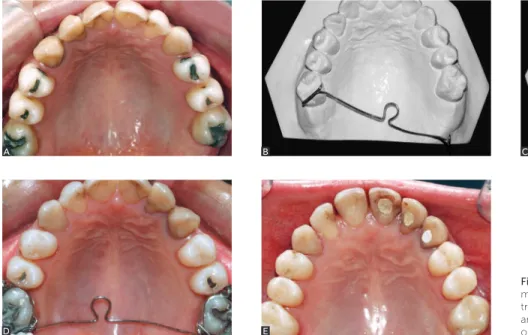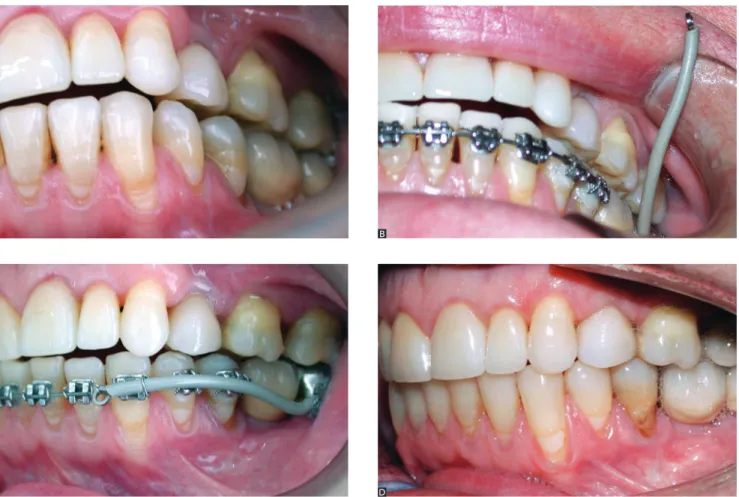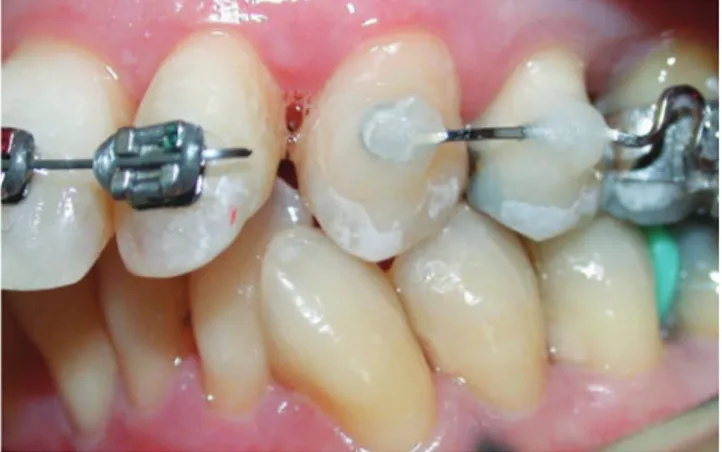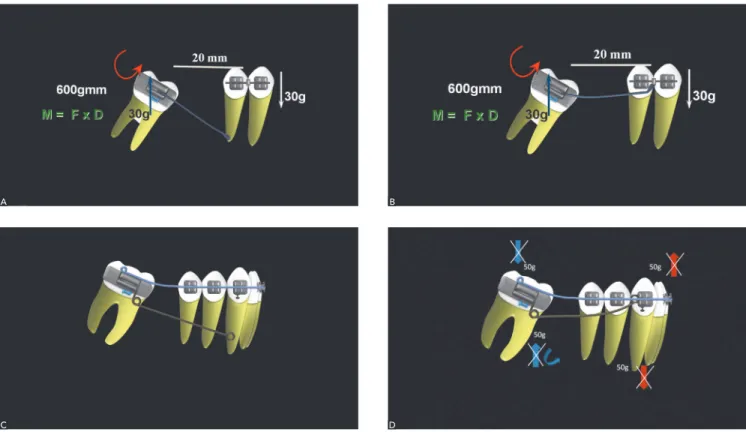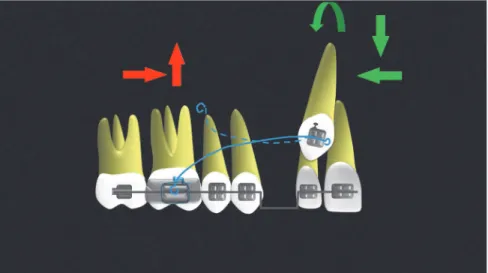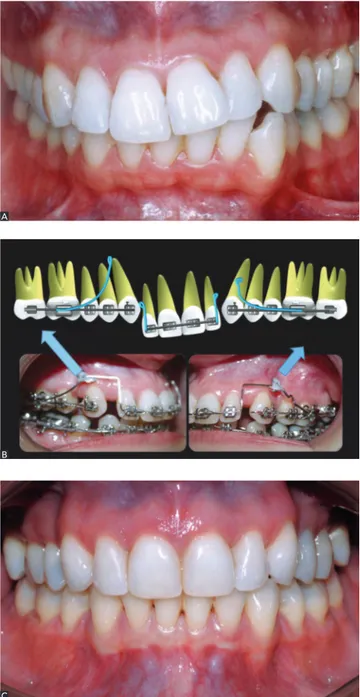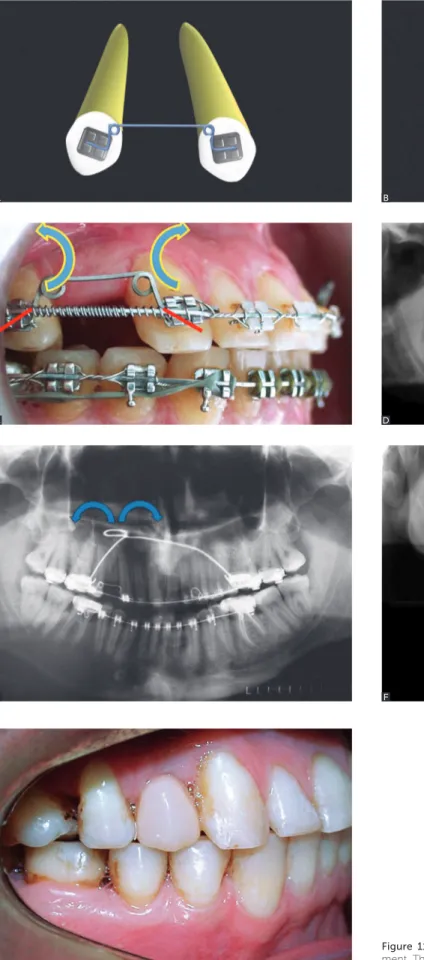An interview with
How to cite this section: Locks A. An interview with Arno Locks. Dental Press J Orthod. 2014 Sept-Oct;19(5):31-44. DOI: http://dx.doi.org/10.1590/2176-9451.19.5.031-044.int - Submitted: August 10, 2014 - Revised and accepted: August 28, 2014
Arno Locks
I met Arno Locks in the 80s when he was my undergraduate professor. However, he will always be my professor; not only in Orthodontics, but also in ethics and ight for the causes of Dentistry. He loves what he does. And those who love, also care, listen and get involved. As undergraduate students, we were aware that a forward-thinking professional who devoted special attention to his students was right in front of us. As his colleague, I fondly remember when he invited me to join the orthodontic postgraduate program at the Federal University of Santa Catarina (UFSC), always encouraging me to express my opinions in a critical and constructive manner. He is always open to discussion! I found these moments in which we are able to express our admiration for a colleague as Prof. Arno very especial, and I have fostered this oppor-tunity with great pleasure. He was born in Braço do Norte, a town located in the Brazilian state of Santa Catarina. As a little child, his family moved to the metropolitan area of Florianópolis, in Biguaçu, where he began his career. Ater re-ceiving his DDS degree from UFSC in 1973 and setting his own oice, Prof. Arno Locks moved to Rio de Janeiro where he entered the postgraduate program in Orthodontics. A few years later, he moved back to Florianópolis as a Master in Orthodontics and professor at the Federal University of Santa Catarina (UFSC). As a renowned professor with his own oice successfully set in Florianópolis, he went on with his career and entered the PhD program at State University of São Paulo (UNESP) in the city of Araraquara. That was when he got to know the segmented arch technique and mechanics with predetermined force system. In 2004, he faced a new challenge. However, for Prof. Arno, challenge is fuel and he entered the Postdoctoral program at Aarhus University (Denmark) under supervision of Prof Birte Melsen. I am privi-leged to have a close relationship with such a generous person who is continuously motivated and demonstrates, at his oice or university, extensive experience as well as ability to listen and enjoy teaching and learning. His attitude explains his extensive knowledge which he generously shares as a clinician and researcher. At the same time, his political posture toward an ethic, scientiic-based Orthodontics has always been present in his ight for professional alliance. Brazilian Or-thodontics owes great respect to Prof. Arno Locks. We are deeply grateful for the assemblies and meetings during which low-quality mercantilist Orthodontics tried to advance, but came across the strong and decisive voice of someone who is strongly committed to his ideals with courage and love. Thank you very much!
Carla D’Agostini Derech
• DDS, Federal University of Santa Catarina (UFSC). • MSc in Dentistry (Orthodontics), Federal University of
Rio de Janeiro (UFRJ).
• PhD in Dentistry (Orthodontics), State University of
São Paulo (UNESP).
• Postdoc, Royal School of Dentistry of Aarhus.
• Adjunct professor, Federal University of Santa Catarina (UFSC). • Former president, Brazilian Association of Orthodontics and Facial
Orthopedics — Santa Catarina (ABORSC) and Brazilian Group of Professors of Orthodontics and Pediatric Dentistry.
What changes were brought about to your orth-odontic practice after receiving PhD (State Uni-versity of São Paulo — UNESP) and Postdoctoral (Aarhus University) degrees from two institu-tions that have been eagerly teaching orthodon-tic treatment conducted by means of seg-mented system of forces and arch mechanics? Luiz Gonzaga Gandini Jr.
In which respect of biomechanics do you high-light Prof. Birte Melsen?
Maurício Tatsuei Sakima
Initially, I would like to thank Prof. Birte Melsen profusely for granting me the privilege of conduct-ing my postdoctoral research at Aarhus University where I acquired unimaginable scientific knowledge on biomechanics.
Prof. Birte Melsen, with great wisdom and cre-ativity, considerably improved the segmented arch technique. She has conducted numerous researches throughout her academic career and has taught us that biomechanics as a science does not consist in installing orthodontic appliances, only. Regardless of prescription, biomechanics is more than tying archwire and waiting for everything to be solved as if by magic without even a basic knowledge of what is going on.
Prof. Birte Melsen has demonstrated that biome-chanics consists in using proper system of forces in-dividualized to address the needs of each case.
As she has repeatedly mentioned, the clinician should plan biomechanics before treatment onset, determining which teeth will be moved in which direction of the three planes of space; in addition to treatment goals. If we do not know where we are going, it is impossible to get there.1
Likewise, I have a lot to thank to the Department of Orthodontics at the State University of São Paulo (UNESP) in Araraquara where I was welcomed in the 90’s for my PhD. During three years, I had to travel extensively; however, with great joy and pleasure, as I was fulfilling my desires and meeting good friends.
My PhD and Postdoctoral degrees provided me with important and indispensable academic/pro-fessional growth, since the knowledge I acquired about the segmented arch technique allowed me to treat more complex cases with which I used to have great difficulty.
Some cases can only be treated by means of the segmented arch technique; otherwise, there will be no efficient outcomes. More severe cases in need of individualized systems of forces, as it is the case of movement of periodontally compromised teeth, cannot be treated differently.
The segmented arch technique with devices such as transpalatal arch, lingual arch and cantilevers al-lows us to obtain measurable controlled forces and predictable movements. These devices favor a much more efficient biomechanics (Figs 1 and 2).
Figure 1 - A) Clinical case revealing totally tipped molars. B, C) Dental casts revealing activation of transpalatal arch in VI geometry. D) Activated and properly installed transpalatal arch. F) Final outcomes of molar correction.
A B C
Still with regard to biomechanics, what re-mains the same since you graduated from UFRJ in 1979? José Nelson Mucha
The essentials acquired during my Master’s course at UFRJ remain exactly the same. And I keep them alive with pride and afection.
At that distinguished institution I learned how to treat my patients with responsibility and criteria, since my education was based on earnest and well-established scientiic evidence based upon proper groundworks.
There, I was exhaustively trained to handle orth-odontic wires by intensely making wire bends during several hours. To my view, this is the only possible way we can train truly responsible orthodontists.
Undoubtedly, properly trained orthodontic profes-sionals require extensive training in study models with
standard edgewise brackets that force them to perform all types of wire bends. Thus, when treatment requires such bends, the professional will not have any diicul-ties, regardless of the type of bracket used.
Those who are trained to properly use standard edgewise brackets are able to use all types of brackets, regardless of prescription. Conversely, those who are not properly trained to make 1st, 2nd, and 3rd order bends are not able to properly treat patients, regardless of the type of bracket used.
I believe every dental school should ofer solid scien-tiic guidance and basic training so as to allow students to master the technique, totally control the wire and, as a result, properly use the desired orthodontic accessories. I also believe that students should undergo in-lab training exclusively with standard edgewise brackets. Figure 2 - Clinical case using cantilever and implant anchorage with Straight-Wire brackets to correct open bite and asymmetry to the left.
A
C
B
Additionally, during training, the clinician must treat a few cases by means of the straight wire tech-nique, but following the principles of biomechanics, regardless of the bracket. Thus, I believe students will be able to understand and have a critical eye towards the technique.
We need to praise the orthodontic technologi-cal development of wires and brackets, as they may bring major benefits to treatment. What we should reject; however, is having untrained students who believe that biomechanics is no longer necessary as brackets would solve everything.
I believe undergraduate and postgraduate courses should be based upon the essentials of biomechanics, diagnosis and planning. They should aim at well-established goals and have solidly trained students capable of completely handling orthodontic wire and appliance, as it is done at UFRJ.
Wrong diagnosis and planning with the use of the best appliances but without proper training yields disastrous results.2
Based on your experience, do you notice any difference in the biological response of peri-odontally compromised teeth?
Gerson Luiz Ulema Ribeiro
What is the limit of treatment of periodontally compromised patients?
Luiz Gonzaga Gandini Jr.
At first, all periodontally compromised cases may and must be treated, provided that periodontal dis-ease is controlled. Success of orthodontic therapy relies on bone quality, not quantity.3
The basic rule for orthodontic movement in pa-tients with little periodontal attachment is having healthy supporting tissues. Should there be no peri-odontal disease, we are dealing with teeth with less bone support, only. Therefore, the biological response will be the same, provided that the biomechanical system is adapted to the local features of these teeth.
Biological response does not depend on the amount of supporting tissue, but on the quality of these tissues3 and the biomechanical system applied Due to anatomi-cal variations in alveolar supporting structures, orth-odontic forces equal in magnitude yield great diferenc-es in the distribution of tension and prdiferenc-essure on tissudiferenc-es of diferent individuals.4
The amount and method of tooth movement sulting from the application of a system of forces re-lies not only on the magnitude, direction and char-acteristics of this system, but also on the points of force application in relation to the tooth as a whole.5
The orthodontist must be able to control the mag-nitude of force and the quality of the system applied to the tooth. Conversely, the speed and method of tooth movement are determined by biological response.6
Despite similar system of forces, the amount of tooth movement varies significantly from patient to patient and in the same patient.7,8,9 This may be due to differences in quality of the biomechanical sys-tems applied; however, it also depends on the local variability of cell response.
In cases of little bone attachment, force is con-centrated within a reduced periodontal area and, for this reason, may be over applied to normal periodon-tium.10,11 Should force be inadequately applied, there will be more hyalinization zones, less movement and more indirect resorption, which is a disaster for the already reduced periodontium.
Root control is hindered in teeth with little bone attachment, since the center of resistance is dislo-cated towards the apex. Thus, proper treatment of these patients requires detailed knowledge of biomechanics.
These cases cannot be treated by means of the straight wire technique because all teeth, whether periodontally compromised or not, would be sub-jected to equal biomechanical forces.
Orthodontic movement must be clearly avoided not only in cases of uncontrolled infection or in-flammation, but also in teeth with little bone at-tachment without retention and stability at their new position.12
Periodontally compromised teeth should be treated with great care. In other words, with light forces and consistent biomechanical system applied to teeth with little bone attachment, thereby avoid-ing major movements and excessive proclination.12
On the other hand, many cases of bone loss do not yield good outcomes simply because the system of forces used was unsuitable for the case. In other words, improper forces were applied.
Therefore, good results are achieved when orth-odontic movements are performed with light forces applied as near as possible to the center of resistance of teeth.15
What are the underlying anchorage means and principles applied to orthodontic treatment of periodontally compromised patients?
Gerson Luiz Ulema Ribeiro
Whenever the orthodontist is planning orth-odontic treatment that includes application of a sys-tem of forces to a given movement, he must be fully aware of the need for anchorage in order to yield the desired outcomes.
Periodontally compromised patients, whose mal-occlusion is severed by major tooth migration, espe-cially of incisor teeth, require the use of segmented arch for specific biomechanics. Major movements must be avoided, for this reason, final treatment outcomes do not consist in achieving perfect occlu-sion, but in improving function and yielding accept-able esthetic results, thereby controlling patient’s periodontal disease.10
In general, premolars and canines present peri-odontium with the best conditions. Based on this hypothesis, I preferably use premolars, canines and, whenever possible, molars as anchorage. The ideal would be not to include these teeth in alignment and leveling or use passive archwire, since minor move-ments may interfere in periodontal proprioception, thereby changing occlusal sensation and decreasing anchorage efficiency.10
Thus, to achieve greater anchorage efficiency, 0.019 x 0.025-in steel wire is directly bonded to teeth without brackets and with transpalatal or lingual arch (Fig 3). This system uses occlusion as anchorage and allows us to perform movement of intrusion and/or retraction necessary for incisors (Fig 4).
Occlusion may also be successfully used as an-chorage by connecting all posterior teeth with Triad VLS resin (Dentsply, York, Pennsylvania, USA). The resin is inserted in the occlusal surface of teeth, and the patient is then required to occlude so as to
interlock it. Subsequently, light is applied for cur-ing. However, one must be careful not to exaggerate in the amount of resin and hinder hygiene. Triad Gel resin (Dentsply, York, Pennsylvania, USA) may also be used, as it favors hygiene. This splint maximizes the use of occlusal forces in anchorage, in addition to including teeth that were out of oc-clusion (Fig 5). Should it be necessary, leveling is conducted at treatment completion.
Furthermore, should it be the case, Temporary Anchorage Devices (TADs) may be used directly or indirectly for anchorage of posterior teeth.
Despite dental technical advance, is extraction still recommended for orthodontic purposes? Gerson Luiz Ulema Ribeiro
To my view, despite all technical advances, the cli-nician must be careful with the amount of tooth move-ment performed. It is limited in the posterior and an-terior region as well as in the transverse dimension.
With the advent of TADs, many professionals are encouraged to perform major distal movements of second and first molars for later retraction of ante-rior teeth. Distal movement of molars is highly rec-ommended in cases of dental discrepancy or molar correction that require movement not greater than 4 mm. Nevertheless, several cases require greater distalization. For instance, retreatment with previ-ously extracted premolars.16,17
Figure 5 - Triad resin used as anchorage for posterior teeth.
Figure 4 - A) Clinical condition before treatment. B) Anchorage with wire bonded directly to teeth during incisors intrusion and retrusion by means of canti-levers. C) Final treatment outcomes.
A B C
Distal tooth movement planning must consider the following factors:18
» Necessary space — with regard to efficiency of results, should each quadrant require more than 3 mm to achieve treatment goals, premolar extrac-tion is preferable.
» Hard tissue conditions — there must be enough space for the posterior region. Extraction of second or third molars may be required to ensure proper space.
» Soft tissue conditions — there must be an ac-ceptable amount of attached gingiva after distaliza-tion, particularly in the distal-vestibular region of lower second molar.
Orthodontic movement must respect the limits of bone bases. For the upper teeth, the tuberosity; and for lower teeth, the anterior edge of the ramus.19 Some cases will always require extractions to compensate for teeth crowding, incisor protrusion, which affects facial esthetics; and maxillomandibular discrepancy.
It is probable that treatment without extraction and with expansion of dental arches has been taken to ex-tremes. Once more, stability problems may be ren-dered important.10 We might begin to see relapses of these major movements in the medium and long term, which may hinder treatment outcomes. Like-wise, rapid or slow dentoalveolar expansion imposes limits that must be respected; otherwise, relapses or periodontal problems may occur.
I believe that cases with mild discrepancy in which the use of TADs may be associated with ex-pansion of the arch are well solved without extrac-tions. As for cases of bimaxillary protrusion, I con-sider extraction to be necessary, particularly with the aid of TADs so as to prevent anchorage loss and, as a result, achieve maximum anterior retraction.
In cases of dental arch asymmetry, asymmetric extractions ease treatment outcomes as they allow the use of symmetrical mechanics and eliminate the difficulties posed by asymmetric mechanics.20
Nevertheless, the role of extractions remains un-clear, since there is not enough good scientific evi-dence to put an end to the matter.
In which situations do you believe the use of straight archwires is less indicated than seg-mented mechanics?
Luiz Gonzaga Gandini Jr.
Straight archwires must not be used in periodon-tal cases with severe malocclusion, given that they require specific mechanical systems.
It is of paramount importance that “sicker” teeth be treated with special care, with specific mechanical systems producing force and movement consistent with the amount of bone attachment. However, should the clinician not have enough knowledge of biomechanics to treat these cases or should straight wire be used alone, all teeth will be treated similarly and subjected to unwanted movement and force that hinder treatment as a result of greater bone loss.
In cases of molar uprighting, the use of straight wire, whether with superelastic wires or any type of loops, will result in molar extrusion which most of times is di-sastrous. Molars may be uprighted by activated springs in Burstone VI geometry that allows uprighting without extrusive forces. When the region of premolars is well anchored and as the system is deactivated with molar uprighting, intrusive force is incorporated into the mo-lar, thereby rendering the system even more eicient (Fig 6).21 Cantilevers may also be used, provided that the extrusive efect they produce is controlled (Fig 7).
Similarly, straight wire should not be used in cases of curve of Spee in which incisor proclina-tion is unwanted. Should straight wire be used with any type of bracket, the arch will follow the curve of Spee. We all know that the shortest distance be-tween two points is a line. Therefore, the wire fol-lowing the curve of Spee will be clearly longer.
For this reason, leveling the curve of Spee requires space. Should there not be enough space, teeth will undergo distal movement, in the transversal direction, or anterior movement with incisors proclination.
Many readers might ask themselves why I am dis-cussing such a basic issue. I will explain: I have seen some “bracket-seller” professors suggesting that all orthodontic procedures are straightforward and, even though they know that the use of straight wire will result in incisor proclination, they teach their students the following: “Pay attention: to prevent incisor proclination, you must bend the end of the wire on the distal surface of molars.”
However, if in front of molars the arch follows the curve of Spee, the latter is corrected with inci-sors proclination, not intrusion. Should the clinician opt to use straight wire with reverse curve of Spee, treatment will yield even more disastrous outcomes. Having to call attention to such a basic orthodontic issue is complete nonsense.
If orthodontic treatment goals include move-ment of teeth, and biomechanics is the branch of physics studying the effects of force, why is this field of study little emphasized in under-graduate orthodontic programs?
Maurício Tatsuei Sakima
To my view, we should not treat this matter ge-nerically, since some undergraduate programs attach great importance to biomechanics, teaching it thor-oughly and competently.
However, with regard to undergraduate courses which do not cover this subject or cover it superfi-cially and without scientific basis, I attribute this fact to irresponsible, dishonest and unskilled professors
Figure 6 - A) Uprighting spring adapted to the molar tube and the TAD canal. B) Uprighting spring activated in VI geometry. Note that the spring must be equally activated on both sides to eliminate forces.
who teach their students that, since angulation, torque, in set and off set are incorporated to brack-ets, there is no need in having in-depth knowledge about biomechanics. According to these professors, everything can be solved simply and quickly.
The marketing provided by these “professors” as well as by bracket industries has led to a real brain-washing. This advertising strategy has proved a big success, since students and clinicians long for treat-ment easiness attributed to appliances that suppos-edly allow treatment to be performed without in-depth training or knowledge.
Those students and clinicians only acknowledge they were deceived when they face complicated cas-es and are not able to solve them.
What are the advantages of Burstone intrusion arch to treatment of periodontally compro-mised cases? Maurício Tatsuei Sakima
The major advantage of Burstone intrusion arch to treatment of periodontally compromised patients is
that, when properly used as a device of the segmented arch technique, it allows true intrusion with mild and measurable forces (determined system of forces) and total root control without dental proclination, which would be a complete disaster for the periodontium.
To this end, the points of force application on each side must be well determined towards the center of resistance of the active member; in other words, towards the set of teeth to be intruded which must be joined as a single tooth with multiple roots. Oftentimes, to achieve success in these periodon-tal cases, force must be as little as possible (5 to 10 g per tooth)7 due to little periodontal attachment,7 giv-en that the action of force will concgiv-entrate within a small periodontal area. Force considered as accept-able for teeth with healthy periodontium is a com-plete disaster for compromised ones. We should use systems that establish balance between moment and force with as little force as possible.
Differently from Ricketts base arch, Burstone intrusion arch is inserted into the bracket slot Figure 7 - A, B) Cantilever used without further care regarding potential side effects. C, D) Care that should be taken to prevent molar extrusion. The end of the arch was used as cantilever tied to the molar tube.
A
C
B
(indeterminate system of forces). As a result, force is applied ahead of the center of resistance of teeth. To control the tendency towards dental proclination, torque should be applied buccaly to the root. How-ever, this is totally contraindicated for periodontally compromised patients, in which case it is difficult to determine necessary torque.
Should intrusion planning include the use of straight wire, mechanics will be even more uncon-trolled with excessively high forces and lack of root control, thereby totally hindering treatment.
Therefore, determined system of forces is un-doubtedly more recommended due to offering per-fectly controlled moment/force.
Based on the biological reactions of orth-odontic movement, what is the minimum visit schedule you recommend for periodontally compromised patients?
Carla D’Agostini Derech
Since occlusal problems, treatment goals, local factors and periodontal damage vary considerably, the need for special care may require more accurate control of cases undergoing treatment.
Furthermore, depending on the biomechanics used, there might be a need for monitoring the pa-tient with frequency so as to asses the development of the system used. This does not mean the clinician should reactivate the system, but monitor the devel-opment of programmed movements instead.
Generally speaking, in routine cases, I usually see my patients every four weeks or 45 days. I have used heat-activated wires releasing lighter forces during longer periods of time.
Whenever we apply a given system of forces, we cannot avoid areas of hyalinization due to the irreg-ularities found in periodontal space. In other words, force tends to be more appropriate in larger peri-odontal spaces, whereas it tends to be excessive and cause hyalinization in limited periodontal spaces.6
Thus, it is up to us to choose a biomechanical system that produces more appropriate and con-trolled movements, thereby minimizing hyaliniza-tion zones and yielding better outcomes within a shorter period of time.
The literature does not reach a consensus regard-ing the minimum force required for tooth movement
to start nor the ideal force.4 The main point here is to use the best biomechanical system that produces appropriate force in the appropriate direction and points of application (Figs 8 and 9).
With regard to orthodontic diagnosis of peri-odontally compromised adult patients, what is your current protocol on the use of imaging exams? Carla D’Agostini Derech
In fact, I do not have a definite protocol. Clinical exams vary depending on the severity of the case.
I routinely ask for lateral cephalometric radio-graph, panoramic radioradio-graph, as well as periapical and posterior interproximal survey. However, should clinical examination render necessary, I might ask for complementary tomographic examination in compromised areas. Should the case be generalized, I ask for complete tomographic examination so as to achieve a more accurate diagnosis.
I have received a massive amount of advertise-ments for orthodontic courses emphasizing technique as their major advantage in compar-ison to others. Additionally, they also advertise teaching the major bracket prescriptions and state-of-the-art appliances. Biology of Tooth Movement and Orthodontic Biomechanics are rarely included in these programs. What is your opinion about that? José Nelson Mucha
I believe this question has been answered in the aforementioned responses. However, I would like to emphasize that the biggest problem of courses ad-vertising a certain type of bracket as the most mod-ern and capable of yielding the best results is that the student is deceived and poorly trained.
The orthodontist must be the best. In other words, he must be well trained not only to apply bio-mechanics, but also to properly use the orthodontic accessories required by the case.
in terms of malocclusion and treatment goals is, therefore, forgotten.
A proper system of forces requires us to consid-er not only the effects produced by the appliance, but also the local factors involved, namely: differ-ent tooth shapes, varied bone support, root length and anatomical shape, and biological response21 (Figs 10 and 11).
Therefore, each case must be individually assessed so as to ensure that proper and most convenient bio-mechanics is applied, whether with segmented arch or straight wire.
During one of my courses on biomechanics, par-ticularly aimed at specialists, I asked my students to manufacture a transpalatal arch for biomechanical training. What a surprise when one of my students Figure 9 - A, B) Cantilever used for canine extrusion and mesialization. C, D) Clinical case using cantilever for canine extrusion and mesialization.
Figure 8 - Cantilever used for root distalization, extrusion and correction.
A B
raised his hand and humbly, but embarrassedly, re-ported not being able to do so, since he had not been trained to make bends and had never made a single one before. No words can describe such nonsense. To my view, that is shameful and dishonest.
Fortunately, by the end of the course, he was one of my best students who evinced intellectual ability and manual dexterity, both of which would have been lost if he had not aimed at broadening his knowledge.
Unfortunately, some students only realize they have been deceived when they face a severe problem they cause themselves or when they are incapable of solving more complex cases.
Students or clinicians may use whatever bracket they are more familiarized with; however, the most important is knowing how to apply the biomechan-ics required for a specific case or tooth by means of using a proper system of forces (Fig 12).
Brazilian Orthodontics poses some doubts as to the number of courses and minimum cred-it hours (qualcred-ity). It differs from the Europe-an Union where orthodontic courses have a minimum of 4,800 credit hours within 3 years, the World Federation of Orthodontics with a minimum of 3,700 hours and the United States where postgraduate programs have a mini-mum of 3,500 to 4,800 credit hours. How can we build a better future for Brazilian Ortho-dontics in terms of quantity and quality? José Nelson Mucha
The Brazilian Dental Association has fought tirelessly for quality of orthodontic postgraduate programs. Sev-eral meetings and discussions have been held with a view to reaching a consensus on how to improve and control those courses. They came to the conclusion that orth-odontic courses should have a minimum of 2,000 credit hours, a reasonable number for Brazilian reality, which was already practiced in some good-quality programs.
If that is the rule, all orthodontic professionals should strictly comply with it and provide students with proper in-lab training comprising a higher number of clinical cases and in-depth scientiic evidence.
Another advantage brought by 2,000-hour courses is hindering the opening of programs of which profes-sors and coordinators travel throughout Brazil irrespon-sibly ofering their low-quality courses.
Figure 10 - A) Clinical case in need of correction of the occlusal plane in the incisors area. B)Mechanics used for incisors intrusion and retrusion with different forces applied to correct the occlusal plane. C) Finished case.
A
B
C
The quest for financial power is greater than the search for quality for which dedication, time and professional skills are necessary. Financial power significantly influences educational institutions that should also be concerned with quality.
Figure 11 - A, B) Mechanics used to split teeth root for implant place-ment. The procedure was carried out with spring activated in VI geometry.
C-G) Clinical case showing mechanics performance.
A
C
E
G
B
D
Figure 12 - Cantilever used for root extrusion, mesialization and correction as well second premolar rotation.
and the Federal Council of Dentistry (CFO), we dis-cussed about the need for agreeing on a minimum of 2,000 credit hours. The representatives were re-luctant to understand and accept it, as if 2,000 hours were too much.
We had to convince them that those hours were strictly necessary. If we have diiculty in convinc-ing our legal representatives that we need to adapt our programs to achieve higher quality, imagine “Dentistry businessmen”.
However, despite the aforementioned difficulties, CFO agreed and issued a decree to regulate the mini-mum of 2,000 credit hours. Nevertheless, financial pressure remained and a new meeting has been re-cently called by CFO with a view to reopen discus-sion on the topic. And the prospect is not good.
To my view, poor management of Brazilian Den-tistry begins in undergraduate programs. Since MEC
allows the indiscriminate opening of undergraduate courses, it should impose qualification examination as an obligation for all graduates as a requirement to practise Dentistry, following the example of the Order of Attorneys of Brazil (OAB) and American Schools of Dentistry.
As for postgraduate programs, particularly in Orthodontics, students should also sit for a quali-fication examination, following the example of Brazilian Medicine and American Orthodontics in which the institutions representatives of specialities manage each domain.
That is the only solution to the serious prob-lem faced by Brazilian Orthodontics. And that should be the major challenge of the Brazilian Dental Association.
Carla D’Agostini Derech
» Professor, Postgraduate program in Orthodontics, Federal University of Santa Catarina (UFSC). » MSc in Orthodontics, Federal University of Rio de
Janeiro (UFRJ).
» PhD in Orthodontics, Federal University of Rio de Janeiro (UFRJ).
» Chairperson, Brazilian Association of Orthodontics and Facial Orthopedics (ABOR / Santa Catarina).
Gerson Luiz Ulema Ribeiro
» Adjunct professor, Department of Orthodontics, Federal University of Santa Catarina (UFSC).
» Postdoc in Orthodontics, Baylor College of Dentistry, USA. » PhD in Orthodontics, Federal University of Rio de
Janeiro (UFRJ).
» MSc in Orthodontics, Federal University of Rio de Janeiro (UFRJ).
José Nelson Mucha
» Full professor, Department of Orthodontics, Fluminense Federal University (UFF).
» PhD in Orthodontics, Federal University of Rio de Janeiro (UFRJ).
» MSc in Orthodontics, Federal University of Rio de Janeiro (UFRJ).
Luiz Gonzaga Gandini Jr.
» Full professor, State University of São Paulo (UNESP). » Postdoc in Orthodontics, Baylor College of Dentistry, USA. » PhD in Orthodontics, State University of São Paulo
(UNESP) / Araraquara.
» MSc in Orthodontics, State University of São Paulo (UNESP) / Araraquara.
» Specialist in Orthodontics, Association of Dental Surgeons / Araraquara.
Maurício Tatsuei Sakima
» Assistant professor and PhD, State University of São Paulo (UNESP) / Araraquara.
» Postdoc, University of Aarhus Dental College, Denmark. » PhD in Orthodontics, State University of São Paulo
(UNESP).
» MSc in Orthodontics, State University of São Paulo (UNESP).
1. Keim RG. The editor’s Corner. J Clin Orthod. 2008;42:261-2.
2. Lee JS, Kim JK, Park YC, Vanarsdall Jr RL. Aplicações clínicas dos minimplantes ortodônticos. São Paulo: Quintessence; 2009. 274 p.
3. Graber LW, Vanarsdall Jr RL, Katherine WLV. Ortodontia: princípios e técnicas atuais. Rio de Janeiro: Elsevier; 2012.
4. Tweed Philosophy. Semin Orthod. 1996;2:229-30.
5. Proit WR, Fields Jr HW, Sarver DM. Ortodontia contempôranea. 4a ed. Philadelphia: Mosby; 2007.
6. Rebellato J. Asymetries extrations used in the treatment of pacients with asymmetries. Semin Orthod. 1998;4:180-8.
7. Melsen B. Current controversies in Orthodontics. Chicago: Quintessence; 1991. 8. Janson M. Ortodontia em adultos e tratamento interdisciplinar. Maringá: Dental
Press; 2008.
9. Melsen B, Cattaneo PM, Dalstra M, Kraft DC. The importance of force levels in relation to tooth movement. Semin Orthod. 2007;13(4):220-33.
10. Middleton J, Jones ML, Wilson AN. Three dimensional analysis of orthodontic tooth movement. J Biomed Eng. 1990;12(4):319-27.
11. Lindauer SJ, Britto AD. Biological response to biomechanical signals: orthodontic mechanic to control tooth movement. Semin Orthod. 2000;6:145-54.
12. Owman MP, Kurol J, Lundgren D. Efects of a doubled orthodontic force magnitude on tooth movement and root resorptions. An interindividual study in adolescents. Eur J Orthod. 1996;18(1):141-50.
13. Owman MP, Kurol J, Lundgren D. The efects of four fold increased orthodontic force magnitude on tooth movement and root resorptions. Eur J Orthod. 1996;18(3):287-94.
14. Fontenelle A. Une conception paradontale du deplacement dentaire provoque vers une application clinique raisonnée. Rev Orthop Dento Faciale. 1982;16:37-53.
15. Roberts WE, Chase DC. Kinetics of cells proliferation and migration associated with orthodontically induced osteogenesis. J Dent Res. 1981;60(2):174-81. 16. Burstone CJ. The biomechanical rationale of orthodontic therapy. In: Current
controversies in Orthodontics. Chicago: Quintessence; 1991.
17. Alstad S, Zachrisson BU. Longitudinal study of periodontal condition associated with orthodontic treatment in adolescents. Am J Orthod. 1979;76:277-86. 18. Melsen B. Tissue reaction following application of extrusive and intrusive forces
to teeth in adult monkeys. Am J Orthod. 1986;89:469-75.
19. Cardaropoli D, Gaveglio, L. The inluence of orthodontic movement on periodontal tissues level. Semin Orthod. 2007;13:234-45.
20. Melsen B. Adult orthodontics. Oxford: Blackwell; 2012.
21. Burstone CJ, Pyputniewicz RJ. Holographic determination of centers of rotations produced by orthodontic forces. Am J Orthod. 1980;77(4):396-409. 22. Cardaropoli D, Corrente G, Abundo R. Intrusion of migrated incisors with
infrabony defects In adult periodontal patients. Am J Orthod Dentofacial Orthop. 2001;120(6):671-5; quiz 677.
23. Melsen B, Agerbaek N, Markenstan G. Intrusion of incisors in adult patients with marginal bone loss. Am J Orthod Dentofacial Orthop. 1989;96(3):232-41. 24. Melsen B, Agerbaek N, Terp S. New attachment through periodontal treatment
and orthodontic intrusion. Am J Orthod Dentofacial Orthop. 1988;94(2):104-16. 25. Murakami T, Yokota S, Takahama Y. Periodontal changes after experimentally
induced intrusion of the upper incisiors in Macaca fuscada monkeys. Am J Orthod Dentofacial Orthop. 1989;95(2):115-26.
26. Corrente G, Abundo R, Cardaropoli D, Cardaropoli G. Orthodontic movement into infrabony defects in patients with advanced periodontal disease: a clinical and radiological study. J Periodontol. 2003;74(8):1104-9.
27. Mucha JN. Entrevista com José Nelson Mucha. Rev Dental Press Ortod Ortop Facial. 2004;9(4):19-28.
